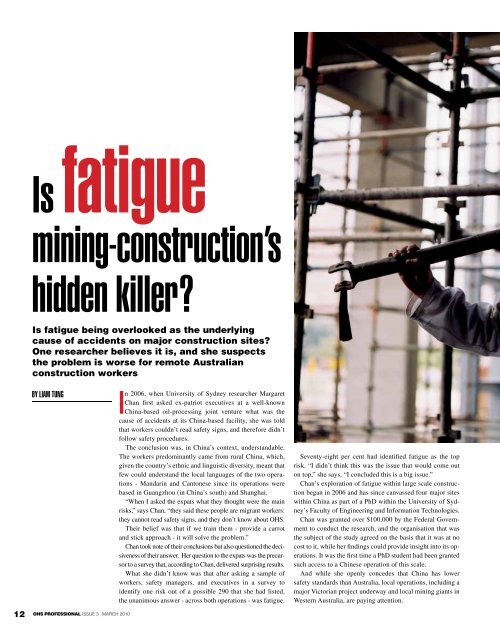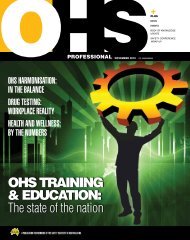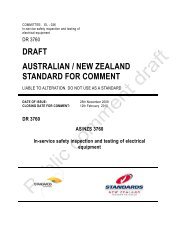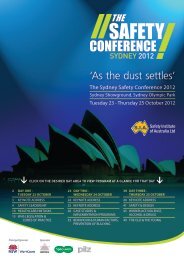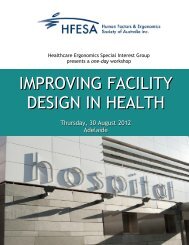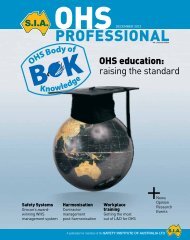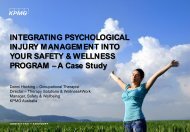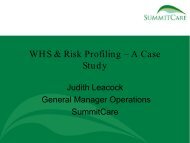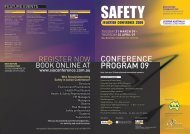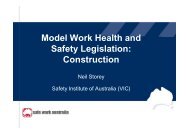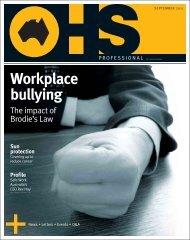Defence: overcoming its âcan Doâ culture unsW kills safety anD risk ...
Defence: overcoming its âcan Doâ culture unsW kills safety anD risk ...
Defence: overcoming its âcan Doâ culture unsW kills safety anD risk ...
Create successful ePaper yourself
Turn your PDF publications into a flip-book with our unique Google optimized e-Paper software.
is fatiguemining-construction’shidden killer?is fatigue being overlooked as the underlyingcause of accidents on major construction sites?One researcher believes it is, and she suspectsthe problem is worse for remote australianconstruction workers12by liam tungOHS PrOfeSSiOnaL ISSUE 3 | MARCH 2010in 2006, when University of Sydney researcher MargaretChan first asked ex-patriot executives at a well-knownChina-based oil-processing joint venture what was thecause of accidents at <strong>its</strong> China-based facility, she was toldthat workers couldn’t read <strong>safety</strong> signs, and therefore didn’tfollow <strong>safety</strong> procedures.The conclusion was, in China’s context, understandable.The workers predominantly came from rural China, which,given the country’s ethnic and linguistic diversity, meant thatfew could understand the local languages of the two operations- Mandarin and Cantonese since <strong>its</strong> operations werebased in Guangzhou (in China’s south) and Shanghai.“When I asked the expats what they thought were the main<strong>risk</strong>s,” says Chan, “they said these people are migrant workers:they cannot read <strong>safety</strong> signs, and they don’t know about OHS.Their belief was that if we train them - provide a carrotand stick approach - it will solve the problem.”Chan took note of their conclusions but also questioned the decisivenessof their answer. Her question to the expats was the precursorto a survey that, according to Chan, delivered surprising results.What she didn’t know was that after asking a sample ofworkers, <strong>safety</strong> managers, and executives in a survey toidentify one <strong>risk</strong> out of a possible 290 that she had listed,the unanimous answer - across both operations - was fatigue.Seventy-eight per cent had identified fatigue as the top<strong>risk</strong>. “I didn’t think this was the issue that would come outon top,” she says. “I concluded this is a big issue.”Chan’s exploration of fatigue within large scale constructionbegan in 2006 and has since canvassed four major siteswithin China as part of a PhD within the University of Sydney’sFaculty of Engineering and Information Technologies.Chan was granted over $100,000 by the Federal Governmentto conduct the research, and the organisation that wasthe subject of the study agreed on the basis that it was at nocost to it, while her findings could provide insight into <strong>its</strong> operations.It was the first time a PhD student had been grantedsuch access to a Chinese operation of this scale.And while she openly concedes that China has lower<strong>safety</strong> standards than Australia, local operations, including amajor Victorian project underway and local mining giants inWestern Australia, are paying attention.


